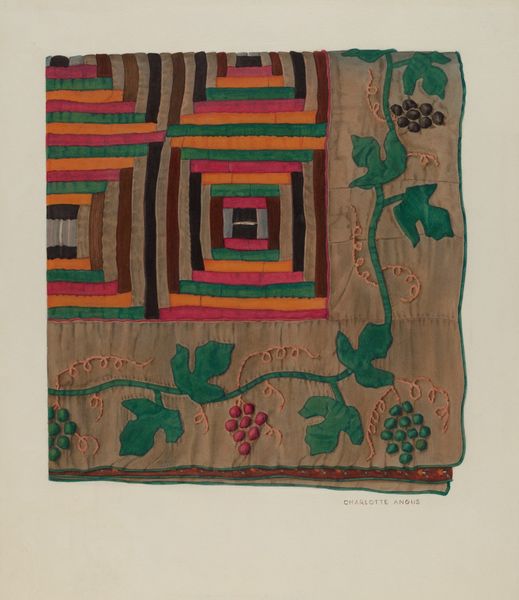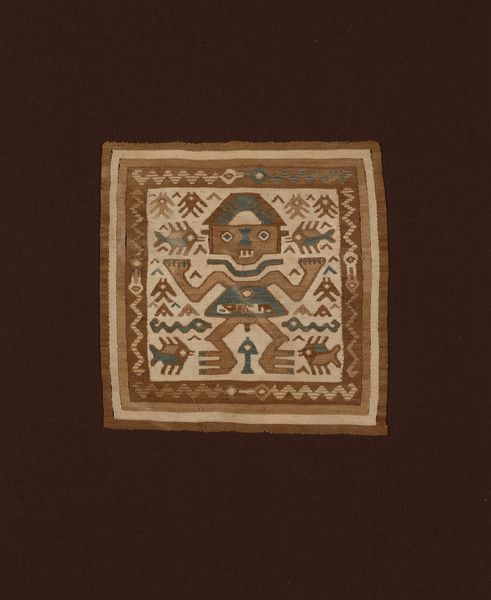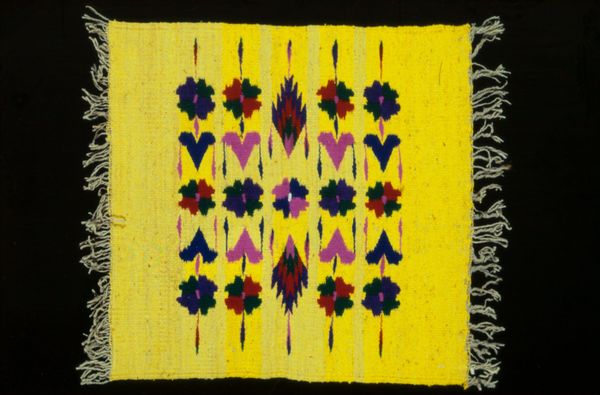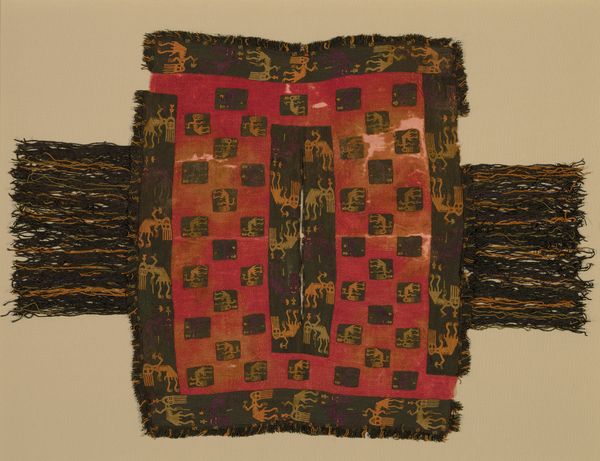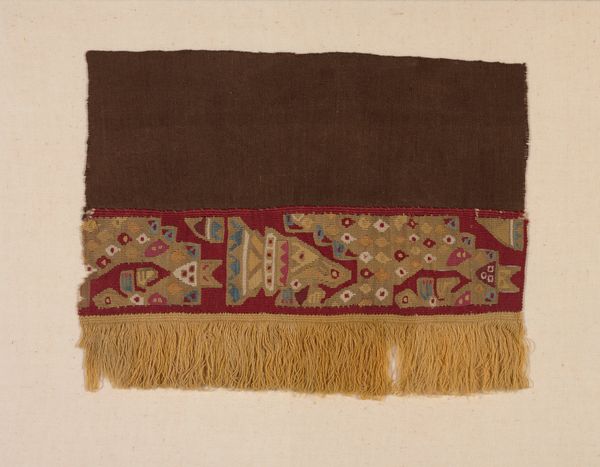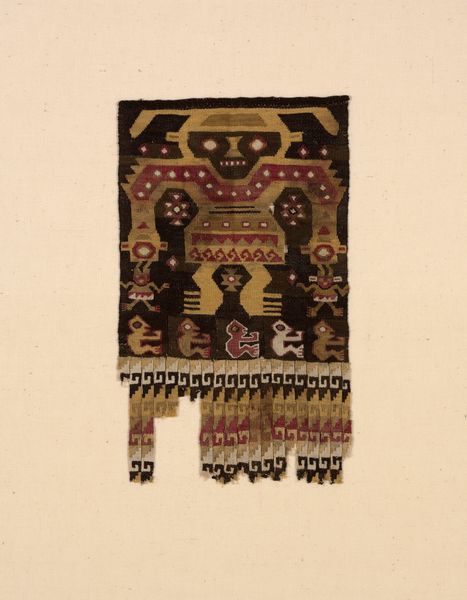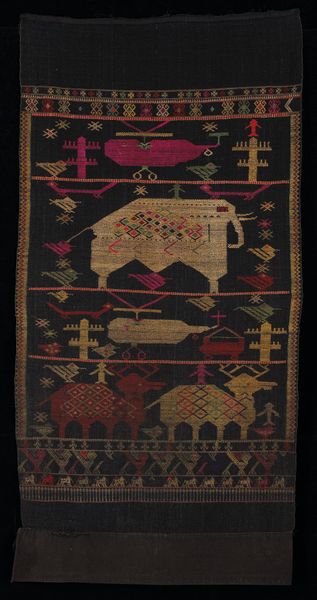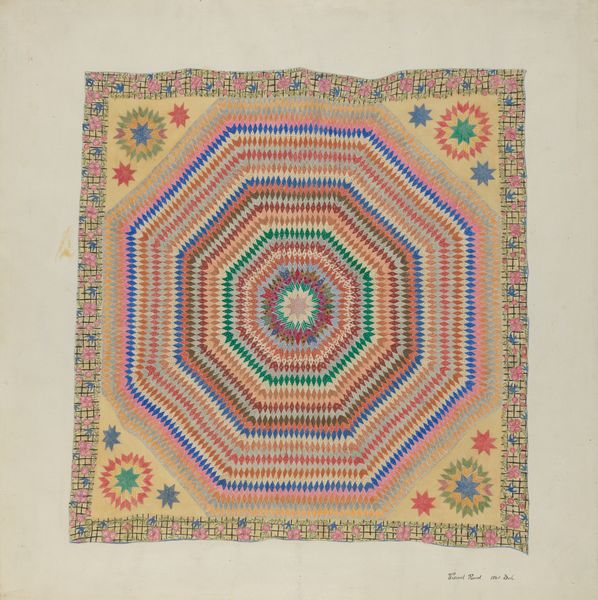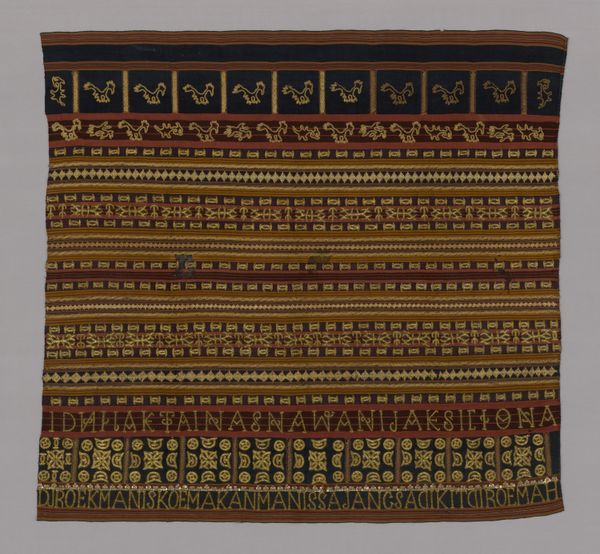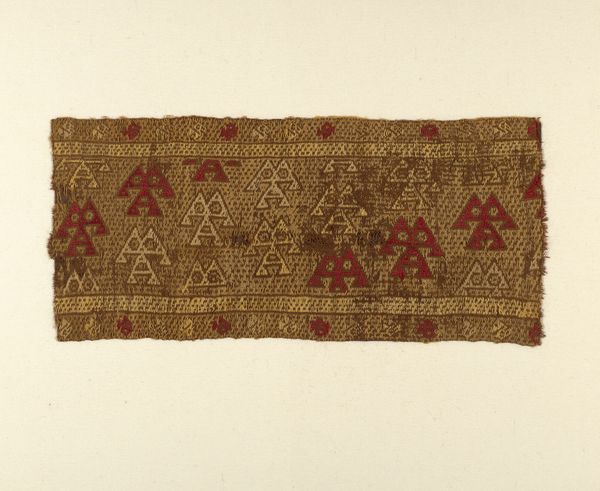
fibre-art, weaving, textile
#
fibre-art
#
decorative element
#
weaving
#
textile
#
geometric
#
decorative art
#
indigenous-americas
Dimensions: 23.2 × 20.6 cm (9 1/8 × 8 1/8 in.)
Copyright: Public Domain
Curator: Alright, shall we discuss this textile "Fragment," possibly from the Lambayeque culture, dating roughly 1000 to 1476? It's currently residing here at the Art Institute of Chicago. Editor: Yes, it's a really interesting piece of fiber art. I'm struck by the geometry and muted colors, but also by how small the remaining piece is. How would you interpret this textile in its historical context? Curator: Well, consider that textiles in Andean cultures weren't just decorative, they were powerful political and social statements. The degree of complexity in a textile like this, the skill involved, directly correlated to power and status within the community. Editor: So, owning and displaying this textile was like displaying wealth? Curator: Precisely! But it goes further. Textiles were also deeply entwined with religious practices, even used as offerings or burial shrouds. Given the fragment’s likely date, can you see how it might represent the transition from earlier Andean beliefs into something influenced by, say, the Incan empire? The geometric abstraction, while characteristic of earlier periods, hints at potentially new standardized imagery that we start seeing employed by the Inca to unify their society. What do you make of the colours? Editor: They are muted compared to other textiles I have seen. Does this indicate the kind of material or perhaps the social context for which they were created? Curator: Possibly both! Dye sources varied geographically. This colour palette may have been linked to what was available, its muted look suggesting use within particular segments of society that were being represented differently. The dyes also hint towards when the fabric might have been woven. Think about what importing colours might represent to the area... power. Editor: That’s fascinating! I never considered how many layers of meaning a simple fragment of textile could hold. Curator: Absolutely. Examining art through a historical and social lens can truly unlock deeper understandings and open further questions! Editor: I agree! I definitely have a lot more to think about when I see textiles now. Thanks for the insight.
Comments
No comments
Be the first to comment and join the conversation on the ultimate creative platform.
